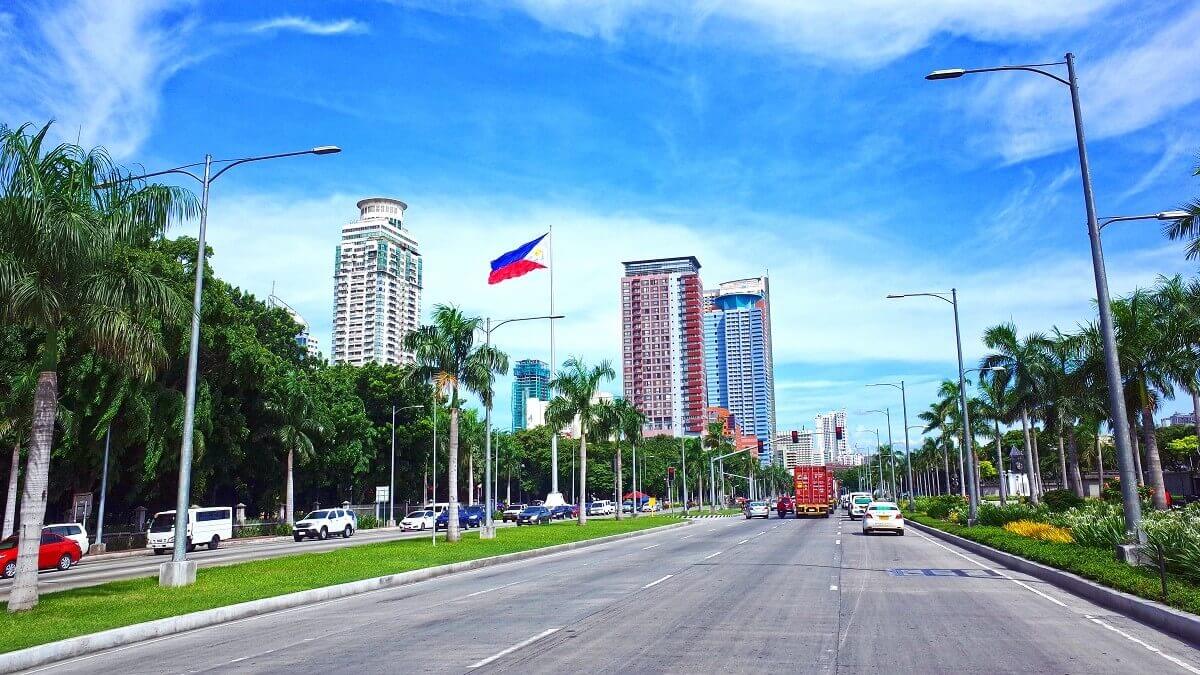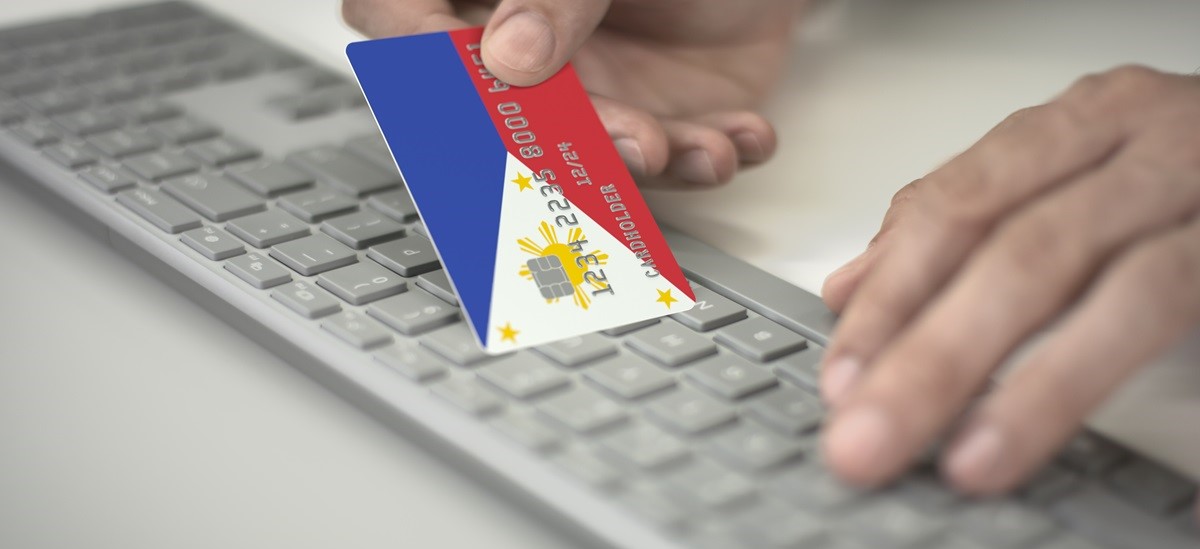Can I keep my US bank account if I move abroad?
Can I keep my US bank account if I move abroad? Find out everything you need to know here in our handy guide.

Thinking of moving to the Philippines from the UK? Whether you’re going there for work, study or just an adventure, you’ll need to work out how best to manage your money.
It can be handy to have a local bank account, but can a foreigner open a bank account in the Philippines? And how easy is it to do?
In this guide, we’ll walk you through opening a bank account in the Philippines step by step. This includes the documents you’ll need, an overview of Philippine banks and whether there are any fees.
But it’s also useful to know that a traditional bank account isn’t your only option.
The Wise account is a great alternative for managing your money in the Philippines and worldwide. It lets you send, spend, convert and receive 40+ currencies including Philippine pesos (PHP), at mid-market exchange rates for just small, transparent fees*.
Learn more about the Wise account 🌍
Moving to the Philippines and want to take your savings with you? With Wise, you can send secure and trackable large amount transfers to the Philippines and 140+ countries worldwide for low fees* and mid-market exchange rates.
Simply email our expert team or request a call back below.
To open a bank account in the Philippines as a UK national, you’ll usually need to have been living there for at least 180 days. This classes you as a ‘resident alien’ and gives you the right to open all of the same bank accounts as Filipino citizens.1
You can still open a bank account if you’re a new arrival, but may be limited to foreign currency accounts only.
Not living there yet? You might find it tricky to open a Philippines bank account from the UK. This is because most banks usually ask for proof of an address in the Philippines.1

It isn’t absolutely essential to have a local bank account in order to move to the Philippines, nor is it a legal requirement.
You may be able to manage without one, and you can always make use of multi-currency solutions such as the Wise account to send, spend and receive money.
But you might find that day-to-day life in the Philippines is a little more difficult if you don’t have any kind of local or international current account.
Everyday things like paying taxes, rent and bills can be more of a headache, as can getting a mortgage and getting paid if you’re working. Even things like signing up for a mobile phone contract can be more complicated without a bank account.
Don’t want the hassle of opening a new account in an unfamiliar country? You might be tempted to keep using your UK account while in the Philippines.
Unfortunately, this may not be possible, depending who you bank with in the UK.
Major UK banks such as Barclays only let you keep your account when moving overseas if you meet certain conditions. For example, if you’re a UK Crown employee or you’re only planning to live abroad for less than 6 months.2
Other banks approach things a little differently. For example, international bank Santander says it will continue to service accounts when the holder moves abroad.3
So if you’re an existing customer, you should in theory be able to continue using your account in the Philippines. The only drawback is that Santander doesn’t operate there, so you won’t have access to branches and ATMs if you need them.
Yes, opening a bank account in the Philippines as a new arrival from the UK is perfectly possible. The Philippines is welcoming to new arrivals, which is part of what makes it such a good country to move to.
However, you’ll need to have your documents in order, including proof of residency and a local address.
As we’ve mentioned, you may be restricted to a foreign currency account when you first arrive. But after you’ve been in the country for at least 180 days, you’ll be able to access a full range of current and savings accounts.
In the Philippines, it used to be the case that you had to visit a bank branch in person to open an account. But things have changed, and a number of banks now accept online applications.
For example, major bank RCBC lets you apply online via one of its mobile banking apps, completing the process in just a few steps.4
However, not every applicant will be eligible to open an account online. You’ll need to check with the bank whether this service is available to non-residents and non-citizens.
Some Philippines banks also offer accounts for students, often in the form of savings accounts.
For example, there’s the Spark Savings Account at Metrobank, another of the country’s major banks.
Available for applicants aged 7 to 21 years old, this account offers 24/7 access, a debit card and has no initial deposit requirement.5
While it can vary from bank to bank, the documents you’ll likely need to open a bank account in the Philippines are:1
To prove your legal right to live in the Philippines, you’ll need to provide an ACR (Alien Certificate of Registration) Card.1 Some banks may accept the Immigrant Certificate of Registration (ICR) instead.
You might also be asked for your visa or work permit, for certain account types.
All banks will accept a valid passport as proof of ID, although you could also use a national identity card.
A recent utility bill or your rental contract should suffice as proof of address.
You may also need to provide the following when opening a bank account in the Philippines:

The banking sector in the Philippines consists of a network of international banks as well as regional institutions.
For foreigners opening a new account, it’s probably a sensible idea to stick to an international bank or one of the country’s large national banks. You’re more likely to find English-speaking services, while regional banks can be more difficult to use and only offer limited services.
To help you find the best Philippines bank account for expats, here’s what you need to know about the country’s largest banks.
These include: BDO Bank, Metrobank, Landbank and BPI.
First launched back in 1968, BDO Unibank is one of the largest banks in the Philippines. It also operates internationally, with full-service branches in both Hong Kong and Singapore.
The bank offers a choice of checking and savings accounts, including a Peso Checking account and interest-earning Smart Checking account. Both accounts come with a debit card and digital banking services.
BDO Bank also offers a wide range of credit cards.
The Metropolitan Bank and Trust Company, commonly known as Metrobank, is another of the Philippines' big banks. It was established in 1962 and is partly public-owned.
Metrobank offers a range of savings, checking and time deposit accounts, including AccountOne. This is an interest-earning account with a debit card.
It also offers a selection of credit cards, along with digital and mobile banking services.
The government-owned Landbank started life as an agricultural bank. Even today, it fulfils its goal of promoting countryside development - while still offering a range of accounts and services for retail and commercial customers.
Landbank offers a wide range of checking and savings accounts, in pesos and US dollars.
This includes its Regular Current Account, Peso EASY Check and Easy Savings Plus (ESP) account. It also offers a number of credit cards, along with e-banking services and a dedicated mobile banking app.
One of the oldest banks in the Philippines, BPI offers both consumer and business banking services.
BPI offers a choice of checking, savings and time deposit accounts, including a Regular Checking Account. There’s also the Maxi One Account, which combines the features of a checking and savings account. All come with access to digital and mobile banking services.
You can also apply for a selection of credit cards with the Bank of the Philippine Islands. And the bank has accounts for businesses too, which could be useful if you’re looking to start a company in the Philippines.
Along with traditional banks, the Philippines also has a number of digital banks to choose from. This includes:
You can also check out non-bank alternatives, which don’t have a banking licence but offer services such as accounts, payments and cards.
This includes the money services provider Wise, which has a multi-currency account, international debit card, transfer services and app available to use in the Philippines.
Now, how much does it cost to bank in the Philippines? There are a few key costs and figures you need to know. This includes fees for money transfers, debit cards and monthly maintenance fees.
These vary between banks, but take a look below for a rough idea of what costs to expect.
| Transaction/fee type | Typical fee |
|---|---|
| Opening an account | Usually free |
| Current account - monthly fee | Usually free |
| Failure to maintain minimum monthly balance requirement | Around 3006 to 3507 PHP |
| ATM cash withdrawal | Usually free at your bank’s ATMs8 |
| Getting a debit card | Free. Around 200 PHP for a replacement card8 |
| Domestic payments (i.e. within the Philippines) | 0 to 10 PHP9 |
| International payments (i.e. to the UK from the Philippines) | Around 600 PHP + additional fees10 |
There are many accounts in the Philippines that have no monthly fees, and that are free to open. However, you’ll need to keep a minimum balance (set by the bank) in your account or there will be a fee to pay.
After reading this, you should have a better idea of how to open a bank account in the Philippines as a UK expat.
But there are also some great alternatives out there, which could be better for managing your money in multiple currencies or sending transfers back home to the UK.
Open aWise account and you’ll only pay a small, transparent fee to send money in 40+ currencies (including PHP and GBP). Better still, you’ll get the mid-market exchange rate for your foreign currency transactions for only a small, transparent fee*.
Here are some of the main benefits for using Wise to send money:
You can also get aWise card for a one-time fee of just £7 and use it to spend in the Philippines and 150+ countries worldwide. There are no hidden fees, and you can even connect your Wise card to Google Pay or Apple Pay.
Importantly, you can open a Wise account in advance of your move to the Philippines. This means you’re not left without a payment method while you’re waiting to open your new bank account, which could be handy for purchasing property or putting down rental deposits.
For more help settling into your new life in France, read our handy guides:
Sources used:
1. B2B Pay - ‘resident alien’ status in the Philippines
2. Barclays - Barclays rules for account holders living or moving outside the UK
3. Santander - Brexit and Santander
4. RCBC - RCBC account
5. Metrobank - Spark Savings Account
6. PNB - PNG regular checking account
7. BPI - debit card fees
8. BPI - Instapay
9. BPI - remit fees
Sources last checked on date: 12-Aug-2025
*Please see terms of use and product availability for your region or visit Wise fees and pricing for the most up to date pricing and fee information.
This publication is provided for general information purposes and does not constitute legal, tax or other professional advice from Wise Payments Limited or its subsidiaries and its affiliates, and it is not intended as a substitute for obtaining advice from a financial advisor or any other professional.
We make no representations, warranties or guarantees, whether expressed or implied, that the content in the publication is accurate, complete or up to date.

Can I keep my US bank account if I move abroad? Find out everything you need to know here in our handy guide.

If you're moving or retiring overseas this is your guide to whether you can keeo a UK savings account abroad, including the rules, banks and more.

Our essential UK guide to current accounts with no fees abroad covering fees, currency exchange and more.

Planning to leave the UK and move abroad? Whether you’ll be working in Europe, backpacking around south-east Asia or retiring in Australia, you’ll have some...

Read our guide and find out if you can open a free Wise account and what features it includes.

We look at the best banks with no foreign transaction fees, showing you how to avoid a non-sterling transaction fee and save money when spending abroad.